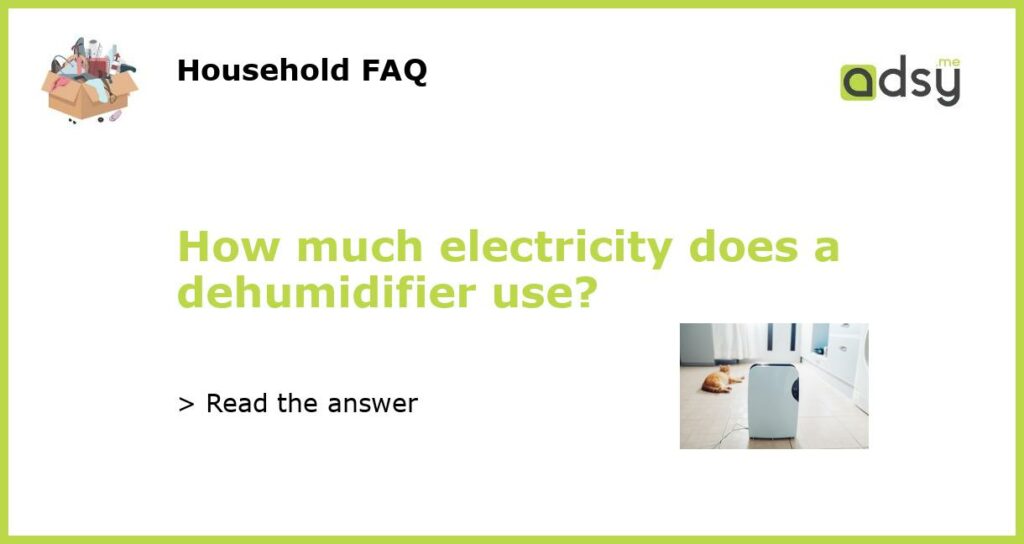Understanding the Electricity Consumption of Dehumidifiers
Dehumidifiers offer a valuable solution for preventing moisture buildup in homes, especially during humid conditions. However, one of the major considerations when using these devices is the amount of electricity they consume. This article aims to provide an insight into how much electricity dehumidifiers consume and factors that affect their energy efficiency.
Factors that Affect Energy Consumption
The amount of electricity your dehumidifier uses depends on several factors, including its size, capacity, and type. Larger models consume more electricity since they have powerful motors that require more energy to operate. Similarly, models with higher capacities that can dehumidify larger spaces will consume more electricity than those designed for smaller spaces.
The type of dehumidifier also plays a significant role in its energy consumption. Desiccant-based models use more electricity than compressor-based models since they use heat energy to extract air moisture. The frequency of use, temperature, and humidity levels in your home also determine the device’s energy consumption over time.
Average Electricity Consumption of Dehumidifiers
On average, a dehumidifier consumes between 300 to 900 watts per hour. For instance, a 50-pint model will use about 580 watts per hour. Based on the device’s wattage rating, you can estimate the amount of electricity it consumes per day or month. For example, if your dehumidifier has a wattage rating of 400 watts and runs for 6 hours a day, the total energy consumption will be 2.4kWh per day.
Energy Efficiency Tips for Dehumidifiers
To reduce your dehumidifier’s energy consumption, consider the following tips:
- Choose an appropriately sized model for your space to prevent overworking the motor and unnecessary energy consumption.
- Clean the air filter frequently since dirty filters restrict airflow and raise energy consumption levels.
- Position the device where there is adequate airflow and avoid placing it too close to the wall, directing the air outwards, or situating it in direct sunlight.
- Set the dehumidifier’s humidistat to 50% to reduce its operating time, energy consumption, and maintain optimal humidity levels.
- Unplug the device when not in use, especially during colder seasons, to avoid consuming unnecessary power.
A well-functioning dehumidifier can have significant energy savings when used correctly. Understanding how much electricity your device uses is crucial when budgeting and to prevent unexpected energy bills. By following the tips above, you can reduce your dehumidifier’s energy consumption and maintain a comfortable and moisture-free environment in your home.






